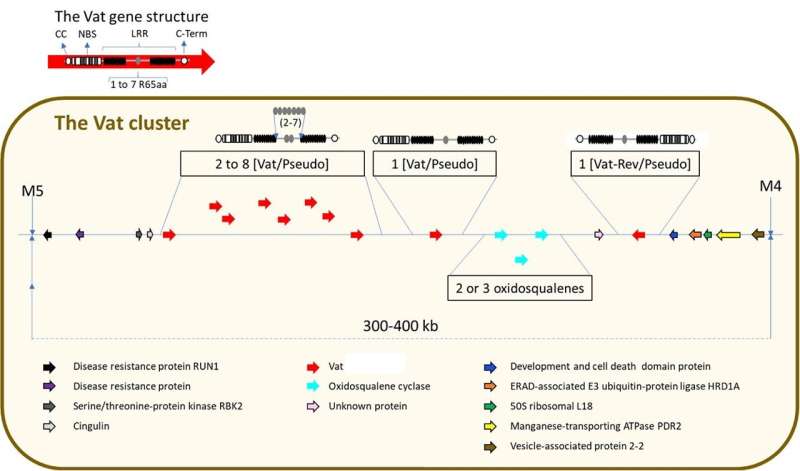Melon's molecular armor: New insights into crop protection

Melon crops face significant threats from pests such as aphids and diseases including powdery mildew, which can lead to substantial economic losses and affect food security. Traditional pest management strategies often prove insufficient, necessitating a deeper understanding of the genetic basis of resistance in plants.
Based on these challenges, there is an urgent need for in-depth research into the melon's genetic makeup to identify and utilize resistance genes that can fortify the plant against these biotic stresses.
In a published by INRAE, France, in Horticulture Research on December 13, 2023, scientists have delineated a complex cluster of NLR genes that confers resistance to both powdery mildew and aphids in melons. This breakthrough not only elucidates the plant's intricate immune mechanisms but also provides a foundational strategy for developing disease-resistant crops.
The research team utilized positional cloning and transgenesis to isolate the resistance genes within the melon genome. Among these, the Pm-wWMR 29 gene emerged as a key player, offering high resistance to powdery mildew while maintaining a unique relationship with its homolog Vat-1PI 161375, which confers aphid resistance.
This dual functionality highlights the evolutionary sophistication of melon's immune system. The study also explored the genetic diversity across various melon types, revealing a broad spectrum of resistance potential that could lead to new approaches in melon breeding and protection strategies.
Dr. Nathalie Boissot, the study's lead researcher, said, "This discovery not only enhances our understanding of melon's immune system but also sets the stage for innovative breeding strategies that can protect against multiple threats simultaneously, ensuring sustainability and efficiency in melon cultivation."
The findings from this study have profound implications for agricultural biotechnology. By harnessing the genetic basis of disease resistance in melons, breeders can develop new varieties that are more resilient to environmental stresses and pest invasions. This could lead to reduced reliance on chemical pesticides, lower production costs, and more stable yields.
More information: Nathalie Boissot et al, A highly diversified NLR cluster in melon contains homologs that confer powdery mildew and aphid resistance, Horticulture Research (2023).
Journal information: Horticulture Research
Provided by TranSpread




















